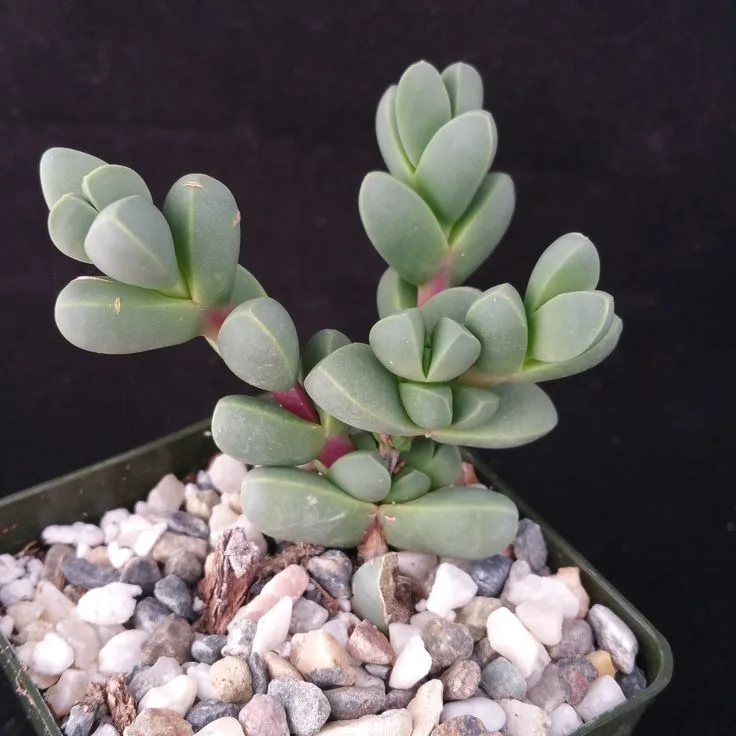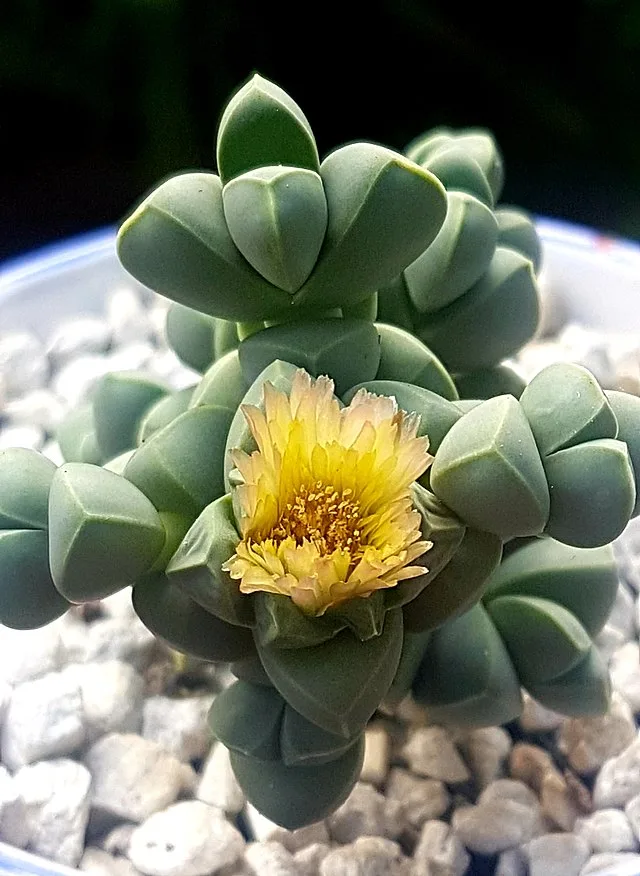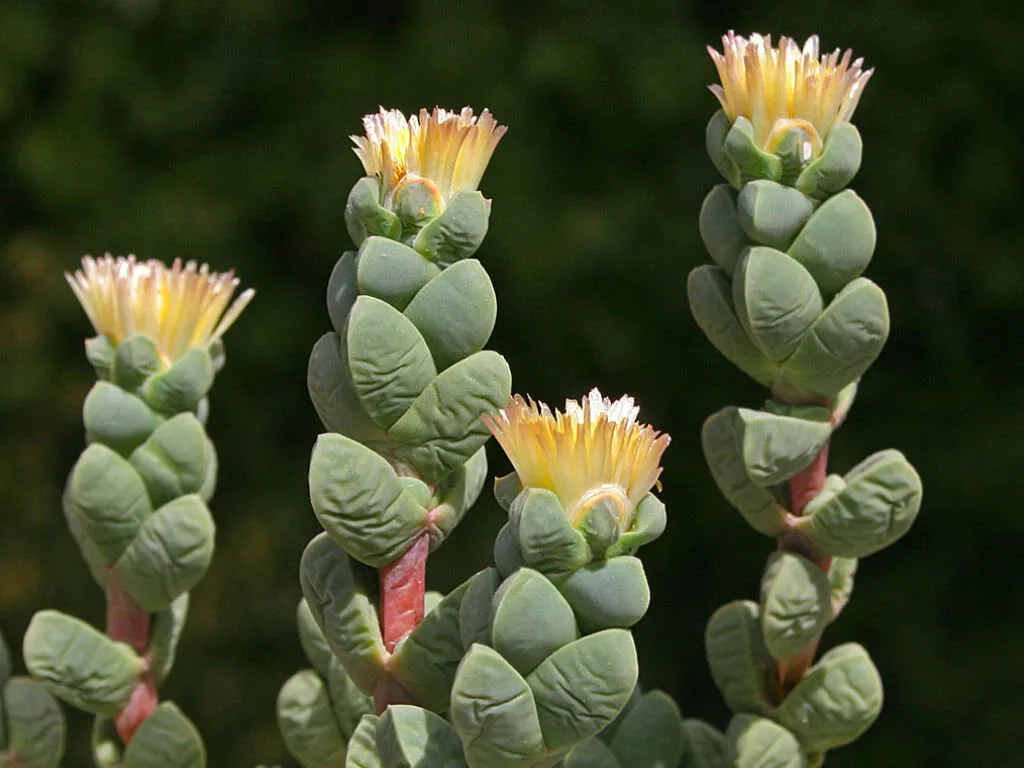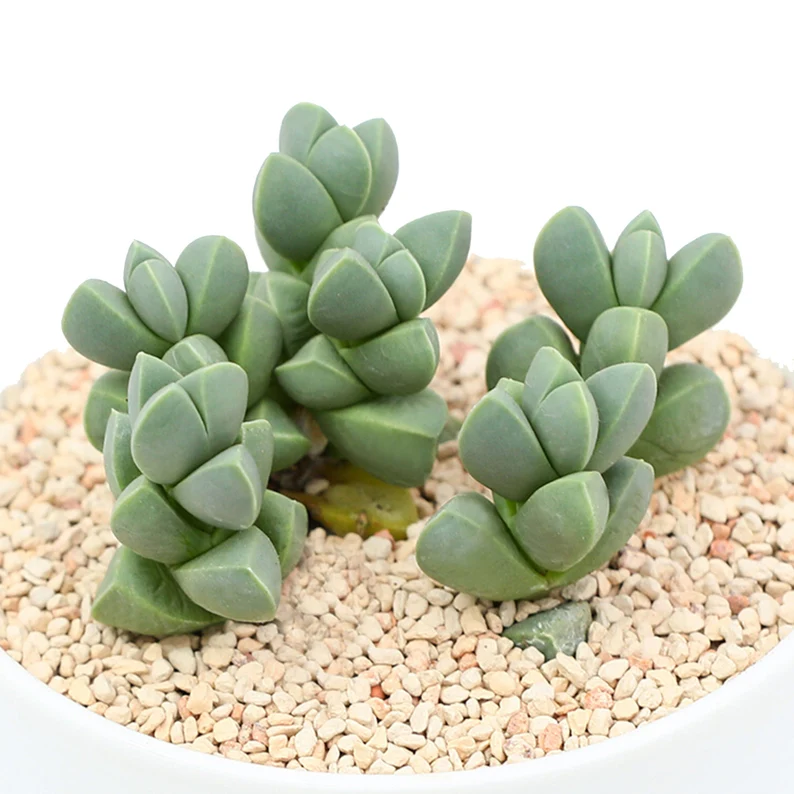index
Presentation
The Ice Plant Succulent, known scientifically as Corpuscularia Lehmannii, offers a charming and unique vision in the world of succulents. Native to the arid regions of South Africa, this succulent displays small, fleshy leaves arranged in dense patterns, creating an aesthetic reminiscent of delicate hearts. Resilient and easy to care for, the Corpuscularia Lehmannii is a popular choice for rock gardens, pots or even as part of succulent arrangements.
Significance of the Ice Plant Succulent
In addition to its unique beauty, the Ice Plant Succulent carries a symbolic meaning. Each leaf, in its heart shape, represents love and affection, making it a charming option for gifting to those special people in our lives. Growing this succulent goes beyond adorning spaces; it is a botanical expression of feelings, reminding us of the fragility and beauty present in relationships. By choosing the Corpuscularia Lehmannii, you not only add a fascinating succulent to your environment, but also embody an enduring symbol of love and connection.
| Common Name | Ice Plant |
| Botanical Name | Corpuscularia Lehmannii |
| Family | Aizoaceae |
| Type of Plant | Succulent perennial |
| Adult size | Height of 5 to 10 cm, spreading horizontally |
| Solar Exhibition | Full sun |
| Soil Type | Well-drained, sandy |
| Soil pH | Slightly acidic to neutral (6.0 to 7.5) |
| Flowering Season | Spring to early summer |
| Color of Flowers | Yellow |
| Native Area | South Africa |
| Toxicity | Non-toxic |

How to Care for the Ice Plant Succulent
The Ice Plant Succulent, or Corpuscularia Lehmannii, requires specific care to thrive and show off all its unique beauty. Here are some guidelines to ensure that it flourishes to the full:
Light
The Corpuscularia Lehmannii appreciates intense light, ideally direct sunlight. Place it in sunny locations to promote healthy growth and vibrant leaf color.
Soil
Use a well-drained substrate composed of sand, perlite and organic matter. The Corpuscularia Lehmannii prefers soils that allow water to drain efficiently.
Water
Water moderately, allowing the soil to dry out completely between waterings. Avoid overwatering, as this can lead to root rot.
Temperature and Humidity
Keep the succulent in rooms with temperatures between 64°F and 75°F. It tolerates dryness well, adapting to low humidity conditions.
Fertilization
Fertilize the Corpuscularia Lehmannii during spring and summer, using a balanced fertilizer for succulents. Reduce fertilization in autumn and winter, when the plant is resting.
By following these guidelines, you will provide the Ice Plant Succulent with the ideal environment to thrive, displaying its charming heart-shaped leaves in the healthiest and most vibrant way possible.
Types of the Ice Plant Succulent
Discover the fascinating diversity of the Ice Plant Succulent (Corpuscularia Lehmannii) through different varieties, each adding a unique touch to the world of succulents:
- Corpuscularia Lehmannii ‘Ice Babies’.
- Characterized by smaller, denser leaves, this variety creates compact and visually intriguing carpets.
- Corpuscularia Lehmannii ‘Minima’:
- With even smaller dimensions, this variant is ideal for small spaces and miniature vases, while retaining the characteristic heart shape.
- Corpuscularia Lehmannii ‘Variegata’:.
- It features variegates in shades of cream and green, adding a touch of elegance to the heart-shaped foliage.
- Corpuscularia Lehmannii ‘Albiflora’:
- It stands out for its white flowers, offering a soft and delicate addition to this hardy succulent.
- Corpuscularia Lehmannii ‘Liliputana’:
- An even smaller version, perfect for succulent arrangements in mini gardens and terrariums.
Exploring these varieties of the Ice Plant Succulent allows you to create unique and personalized compositions, taking advantage of the distinct nuances of each one. Whether you choose a specific variety or combine several, the diversity of this succulent provides endless options for gardening enthusiasts.

How to Make a Ice Plant Succulent Cuttings
Propagating the Ice Plant Succulent (Corpuscularia Lehmannii) is an accessible process even for gardening beginners. Follow these simple steps to create cuttings and expand your collection:
- Choice of Sheets:
- Select healthy, mature leaves from the mother plant, making sure they have no damage or imperfections.
- Healing:
- Leave the chosen leaves to heal in an airy place for a few days. This allows the base of the leaves to form a protective layer before planting.
- Planting in Sandy Soil:
- Insert the healed leaves into sandy soil, slightly burying the base. Keep the soil slightly moist during the rooting process.
- Root Development:
- After a few weeks, the leaves will start to grow roots. At this point, they are ready to be transferred to individual pots.
How to Plant the Ice Plant Succulent
When planting seedlings or the adult succulents themselves, pay attention to the following steps to ensure healthy growth:
- Choice of Vessel:
- Opt for pots with good drainage to prevent water from accumulating, providing an environment more conducive to root growth.
- Suitable Soil:
- Use a specific substrate for succulents, adding sand or perlite to improve drainage.
- Solar Exposure:
- Place the pot in a spot with bright direct or indirect sunlight, ensuring the optimal development of Corpuscularia Lehmannii.
- Moderate Rega:
- Maintain a moderate watering routine, allowing the soil to dry out completely between waterings to avoid rotting problems.
By following these simple guidelines, you will succeed in both propagating and planting the Ice Plant Succulent, creating an environment conducive to its healthy growth and display of charming heart-shaped leaves.

Most Common Pests and Diseases
The Corpuscularia Lehmannii, despite its resistance, can face some problems. Be aware of the following issues:
- Bugs:
- Small insects that feed on the sap of the plant, leaving stains and sticky secretions.
- Mites:
- They can cause yellowing and deformation of the leaves.
- Root Rot:
- The result of excess humidity, leading to discoloration and wilting of the leaves.
Common Problems and Their Solutions
- Leaf stains:
- Cause: Prolonged exposure to strong sunlight.
- Solution: Move the plant to a place with indirect or filtered light.
- Wilted and Soft Leaves:
- Cause: Over-watering.
- Solution: Reduce the frequency of watering and adjust to ensure slightly damp soil.
- Root rot:
- Cause: Waterlogged soil.
- Solution: Transplant into well-drained soil and adjust the frequency of watering.
- Sticky Leaves:
- Cause: Infestation of mealybugs.
- Solution: Clean the leaves with soap and water, or use a mild insecticide.
Ao identificar e tratar prontamente esses problemas, você garantirá que a Suculenta Coração Partido mantenha sua beleza e vitalidade ao longo do tempo.
Curiosities and Myths
Curiosities
- African origin:
- The Corpuscularia Lehmannii is native to the arid regions of South Africa, where it adapts to dry and sunny conditions.
- Dry Resistance:
- Its ability to store water in its leaves contributes to its resilience, allowing it to survive in drought conditions.
- Charming Varieties:
- In addition to the standard variety, there are cultivars such as ‘Ice Babies’, ‘Variegata’ and ‘Albiflora’, each with unique characteristics.
Myths
- Need for Constant Seedlings:
- Myth: The Corpuscularia Lehmannii is hardy and can thrive for many years without the constant need for seedlings.
- Exclusivity in Vases:
- Myth: Although it is common in pots, this succulent can also be planted in rock gardens and flowerbeds, adapting to different environments.
- Difficult Maintenance:
- Myth: With proper care, such as sufficient sunlight, well-drained soil and moderate watering, the maintenance of the Ice Plant Succulent is uncomplicated.
Exploring the curiosities and debunking myths about the Ice Plant Succulent broadens the understanding of this enchanting plant, making the experience of growing it even more fascinating.

Conclusion
As we explore the charms of the Corpuscularia Lehmannii, better known as the Ice Plant Succulent, we dive into a universe of delicacy and resistance. Originally from the arid landscapes of South Africa, this succulent not only captivates with its heart-shaped leaves, but also surprises with its ability to thrive in adverse conditions.
Throughout this article, we learn how to propagate, plant and care for this unique plant, dispelling myths and highlighting curiosities that enrich the experience of growing it. From its enchanting varieties to the debunking of preconceived ideas, the Ice Plant Succulent reveals itself not only as a decorative plant, but as a symbol of love and endurance on the gardening journey. By celebrating the beauty of this unique succulent, we reinforce the importance of caring for our plants with attention and appreciation, cultivating not only leaves, but also deeper connections with nature.
Frequently Asked Questions
Why does the succulent Ice Plant get wrinkled?
The Ice Plant Succulent can shrivel due to various factors, and it is crucial to identify the specific cause. The main reasons include:
Excess Water: Too much watering can lead to water accumulation in the leaves.
Lack of Sunlight: Insufficient light can affect the photosynthesis process and cause wrinkles.
How to care for a Ice Plant succulent?
To ensure the well-being of the Corpuscularia Lehmannii:
Appropriate lighting: Place it in places with direct sunlight or indirect brightness.
Well-drained soil: Use a substrate suitable for succulents, ensuring good drainage.
Moderate Watering: Allow the soil to dry out between waterings to avoid excess moisture.
Avoid Extreme Temperatures: Protect the plant from very high or low temperatures, adapting the environment to its natural habitat in South Africa.







